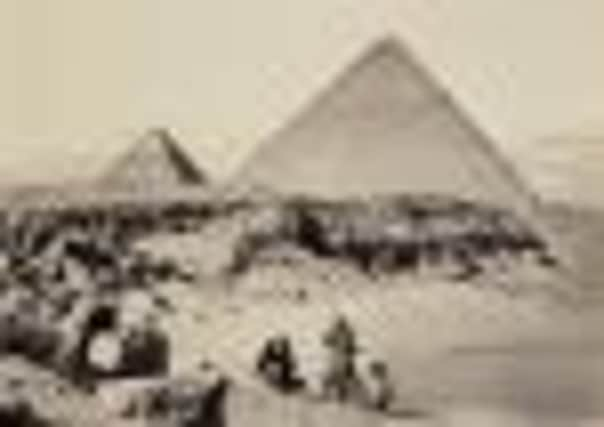Edinburgh expo for rare Middle East Royal photos


Now the photographs of the four-month-long odyssey, which was organised by the Queen to occupy a 20-year-old Prince of Wales after he left university, have gone on display for the first time in 150 years.
Holyrood Palace, the Queen’s residence in Edinburgh, is playing host to a major new exhibition charting the tour, the images of which were said to offer the outside world some of the first glimpses of the Middle East.
Advertisement
Hide AdThe 1862 tour - which included took in Egypt, Palestine and the Holy Land, Syria, Lebanon and Turkey - was launched by former Beirut hostage John McCarthy, who is making a BBC documentary charting the life of Bedford.


Various archaeological artefacts from the tour, as well as Greek and Roman antiquities collected by the Prince, have also been reunited with the 170 photographs taken by Bedford for the first time in 150 years for the new exhibition.
It explores the cultural and political significance Victorian Britain attached to the Middle East, its importance to the country as a through-route to India, and how it was fast-becoming a tourism destination - just five years after the Prince’s visit, package tours to Egypt and the Holy Land were launched from Britain.
Bedford, a commercial photographer in London, was commissioned by the Queen to record her son’s tour after compiling photograph records of Coburg and Gotha in Germany as a gift for her husband, Prince Albert, to remind him of his upbringing there.
The then 20-year-old Prince was to meet rulers, politicians and other notable figures – but also travelled in a manner never previously associated with royalty. The small entourage had set sail from London on the Royal Yacht Osbourne, but made their journey on land mainly by horse and camping out in tents overnight. Bedford instigated an exhibition only a few months after the party returned. His photographs quickly became collector’s items.


Mr McCarthy, whose documentary series on Bedford will be going on BBC Radio 4 in May, said: “The idea is to go to each country that they visited on the tour and look at a couple of the images that Bedford took and see if we can literally find where he put his tripod and see what the view is today.
Advertisement
Hide Ad“At the same time I want to think about the political and social situations in each of these places in 1862 and review how it is today, but also see what has happened during the intervening period.
“I found the story of how Bedford had accompanied by the Prince of Wales and how he got these amazing images absolutely fascinating and I thought it would be really interesting to follow in his footsteps.
Advertisement
Hide Ad“Bedford’s trip to the Middle East was the first time that anyone had gone on a royal tour to take pictures. Photography was only 30 years old at this point so it was very much a new medium. The amazing thing is how good the pictures were, especially when you think of him lugging all that equipment around the desert with him. It was also the first time that photographs from this part of the world had really been seen by people.”
Ms Gordon added: “One of the reasons Bedford was forgotten or dismissed by art historians is that he was enormously commercially successful. There is a tendency to equate that with appealing to the masses and not attracting the elite audience.
“Bedford’s photographs were a revelation to the Victorian public, who really only knew the Middle East through prints, books and the Bible. The photographs were believed to present a truthful, objective view of the region.
“The other important thing about the tour was that Prince Albert had just died very unexpectedly and no-one knew how long Queen Victoria was going to remain on the throne, so there was a real urgency to make sure the Prince of Wales was educated - so that he understood not just the history and culture of the region, but also that he knew diplomatic relationships, and meeting politicians and rulers. Although it was a private tour it also had a real educational and political purpose.”
The exhibition, Cairo to Constantinople: Early Photographs of the Middle East, is at the Queen’s Gallery at Holyrood Palace until 21 July.